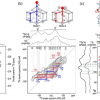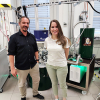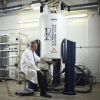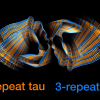
Scientists have developed a method using machine learning to better analyse data from nuclear magnetic resonance (NMR) spectrometers. NMR spectrometers allow scientists to characterise the structure of molecules, such as proteins, but it can take highly skilled human experts a significant amount of time to analyse that data. This new machine learning method can analyse the data much more quickly and just as accurately.
In a recent study, the scientists described their process, which essentially teaches computers to untangle complex data about atomic-scale properties of proteins, parsing them into individual, readable images.
“To be able to use these data, we need to separate them into features from different parts of the molecule and quantify their specific properties”, said Rafael Brüschweiler. “And before this, it was very difficult to use computers to identify these individual features when they overlapped.”
The process, developed by Dawei Li and called DEEP picker, teaches computers to scan NMR spectra and deconstruct the spectra into readable peaks. The process involves creating an artificial deep neural network, and training it to analyse NMR spectra by feeding spectra that had already been analysed by a person into the computer and telling the computer the previously known correct result. The deep neural network was able to parse out the peaks in the highly complex sample with the same accuracy as a human expert, the researchers found. And more, the computer did it faster and highly reproducibly.







